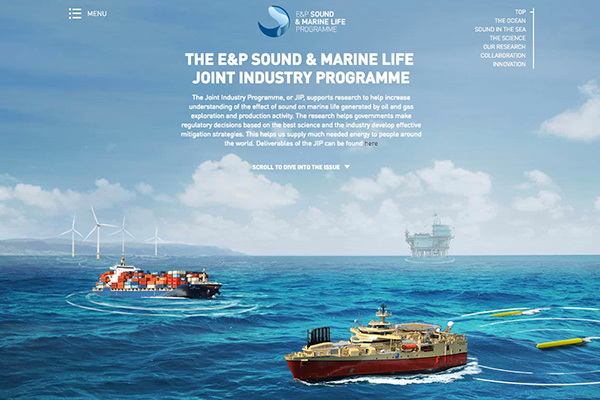Sounds of the Sea
Spotted seal Tunu has been trained by scientists to participate in behavioral studies of hearing at UC Santa Cruz. NMFS permit 18902.
Courtesy, Prof. Colleen Reichmuth, UCSC
In 1953, Jacques Ives Cousteau co-authored a book titled The Silent World: A Story of Undersea Discovery and Adventure. And while there have certainly been many ocean discoveries and adventures by scientists and explorers since then, there is one thing we can be sure of over 60 years later—that planet Earth’s oceans are anything but silent. Some are generated from natural sources, such as breaking waves, plate tectonics, ice calving, whales, fish (e.g., croaker), and crustaceans (e.g., snapping and mantis shrimp). Other sounds are generated from human activities, such as vessel traffic, seismic surveys, pile driving, wind turbines, sea-bottom trawling, dredging, and various types of echo-sounders and sonar.
Sound travels in different ways in water and is affected by a variety of factors, such as temperature, salinity, and depth, to name just a few. Ocean acoustics is the study of sound and its behavior in the sea. When underwater objects vibrate, they create sound-pressure waves that alternately compress and decompress the water molecules as the sound wave travels through the sea. Sound waves radiate in all directions away from the source like ripples on the surface of a pond, yet sound levels and certain sound frequencies are lowered (due to transmission loss) along the travel paths. As you might imagine, the sounds and noises, both natural and anthropogenic, affect the environment and its inhabitants to varying degrees.
Multi-Year Joint Industry Program
In May 2006, several oil and gas companies and industry associations formed a multiyear joint industry program (JIP) designed to improve our understanding of the potential physical and behavioral effects on different forms of marine life resulting from sound produced by oil and gas activities. There are many factors that influence if and how much a sound source affects marine animals: how loud the source is, which frequencies it transmits, where it will be used, and what species might be in the area. All of these factors interact in complex ways and determine what marine animals actually hear.
Universal Alerting Sense
Hearing is the universal alerting sense in all vertebrates. Sense of sound is vital because animals are able to hear events all around them, no matter where their attention is focused. Many species of blind amphibians, reptiles, fishes, and mammals are known, but no naturally profoundly deaf vertebrate species have been discovered. Although hearing is important to all animals, the special qualities of the undersea world emphasize the necessary use of sound and hearing within certain frequency bands.
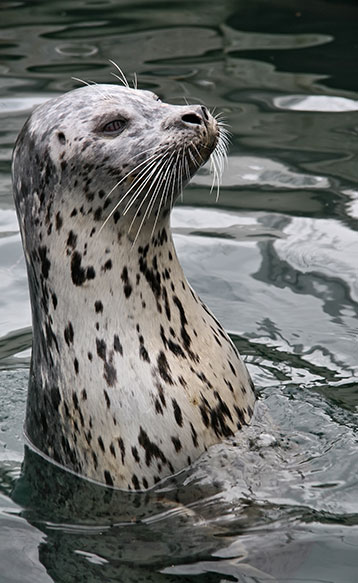
Spotted seal (Tunu) In-air hearing test
This video shows Tunu, a male spotted seal, participating in a cooperative signal detection task at 1,600 Hz in a noise-attenuating, in-air acoustic chamber at Long Marine Laboratory. This type of hearing test tells scientists how sensitive these seals are to airborne sounds.
Sound Impacts Marine Life
Scientists suggest that increased background noise and specific sound sources potentially impact marine animals in several ways. These potential impacts include altered behavior, masking of sounds important to communication, and hearing loss (which can be both temporary or permanent).
The JIP is currently the most extensive industry research program in this field. Notably, it has, to date, funded research to the tune of $55 million (U.S.), primarily with universities and academic researchers around the world. This has resulted in the publication of more than 80 peer-reviewed manuscripts by independent scientists. Its research is divided into several categories, ranging from an understanding of how sound travels underwater to the possible effects of sound on the physical and behavioral well-being of marine fauna.
 Professor Colleen Reichmuth and her team from the University of California, Santa Cruz, have conducted research on hearing for three species of Arctic seals (ringed, spotted, and bearded) using behavioral means. Overall, the Arctic seal study found that the animals were very sensitive to both airborne and waterborne sounds and that critical ratios—a measure of the ability to detect signals in the presence of other sounds—are among the lowest ratios ever recorded for mammals. Low critical ratios mean that ringed and spotted seals can efficiently extract signals from background sounds across a broad range of frequencies.
Professor Colleen Reichmuth and her team from the University of California, Santa Cruz, have conducted research on hearing for three species of Arctic seals (ringed, spotted, and bearded) using behavioral means. Overall, the Arctic seal study found that the animals were very sensitive to both airborne and waterborne sounds and that critical ratios—a measure of the ability to detect signals in the presence of other sounds—are among the lowest ratios ever recorded for mammals. Low critical ratios mean that ringed and spotted seals can efficiently extract signals from background sounds across a broad range of frequencies.
Subscribe To ON&T
serving professionals in the ocean industry around the world.
Continue Reading
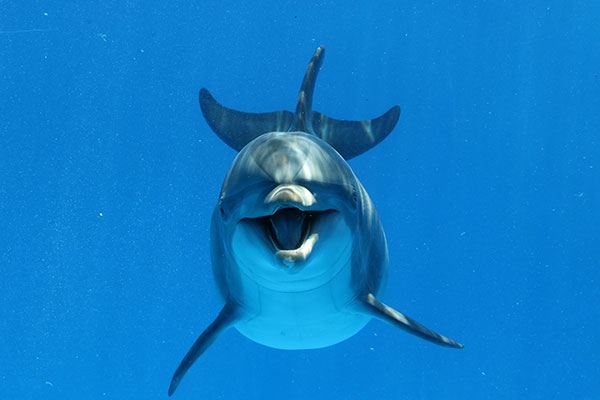
Dolphin research conducted by James Finneran and his team at the U.S. Navy Marine Mammal Program, San Diego, showed that the potential for seismic sources to cause temporary hearing loss in dolphins is lower than previously predicted. Dolphins are relatively insensitive to air gun impulses. This is primarily because air gun impulses have mostly low-frequency energy and contain little energy at the high frequencies where dolphin hearing is most sensitive. The team also found that behavioral responses to repeated sound impulses might reduce the levels of sound exposure by the ears, thus reducing the likelihood of impact in the form of temporary threshold shifts.
Another large, multiyear study led by Dr. Doug Cato, conducted by Curtin University, the University of Brisbane, and the University of Sydney, studied the behavioral response of Australian humpback whales to seismic surveys. The researchers in this study found that there was no significant dive response by the whales to ramp-up with the small seismic array or to the constant source, but concluded that the value of ramping up is that it limits the exposure of those whales close enough to the source for the received levels to be of concern. The researchers also found no evidence of orientation of the groups of humpback whales towards or away from the source vessel towing the acoustic source.
An important function of the JIP is ensuring that the industry stays abreast of up-to-date technology and methods to effectively manage offshore day-to-day operations. As such, the JIP has funded research into technologies and methods that influence the way the industry operates. For example, the JIP developed PAMGuard, a software system coupled to hydrophones that can detect animals, classify them to species, and locate them in three dimensions (called DCL software). Fixed installation PAM (Passive Acoustic Monitoring) systems allow the industry to acoustically monitor marine mammals over a given area for extended periods (years to decades).
In Conclusion
Such research results help regulators and policymakers make decisions based on high-quality science and help the regulated industries develop effective mitigation measures.
More information about the research, final project reports, and a list of peer‑reviewed publications are available on the JIP website www.soundandmarinelife.org. Additional peer-reviewed information on marine sound can be found on the DOSITS (Discovery of Sound in the Sea) website (www.dosits.org), published and maintained by The University of Rhode Island.
Read ON&T Magazine
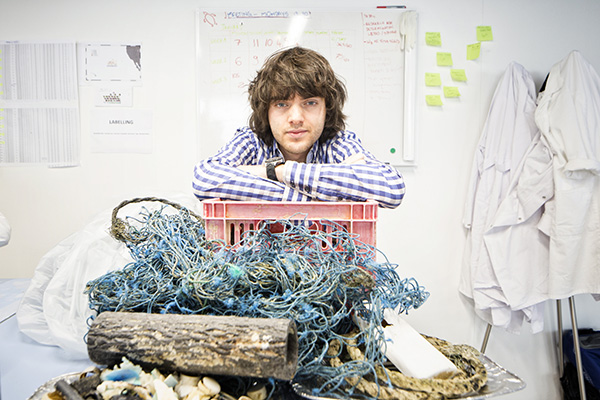
Plastic Oceans: A Cleaner Future with Ocean Engineering
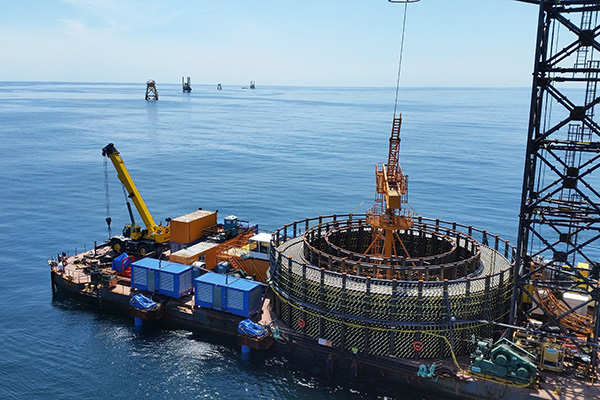
Subsea Cable Installation for the Block Island Wind Farm
Credits
Writer: Rhonda Moniz is the editor for Ocean News and Technology Magazine and has been in the ocean technology industry as a diver and ROV pilot for over 25 years. Her work has taken her around the world as a diver, filmmaker, writer and explorer.
Editors: Robyn Bryant, Rhonda Moniz, Greg Leatherman
Photography: Dr. G. Isaksen, Prof. Colleen Reichmuth
Creative: John Paquette, Suzanne Short
Production: Suzanne Short

